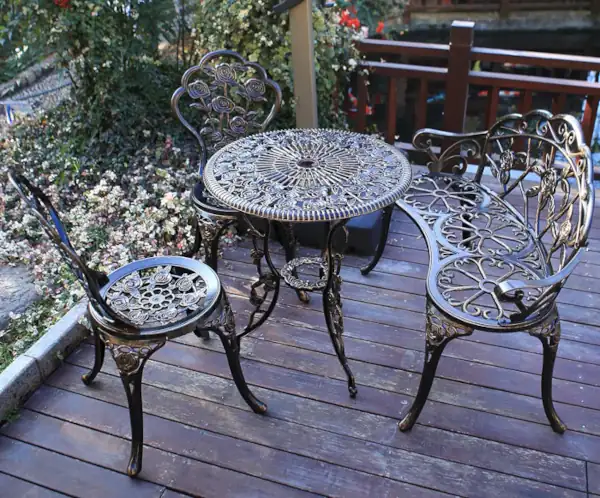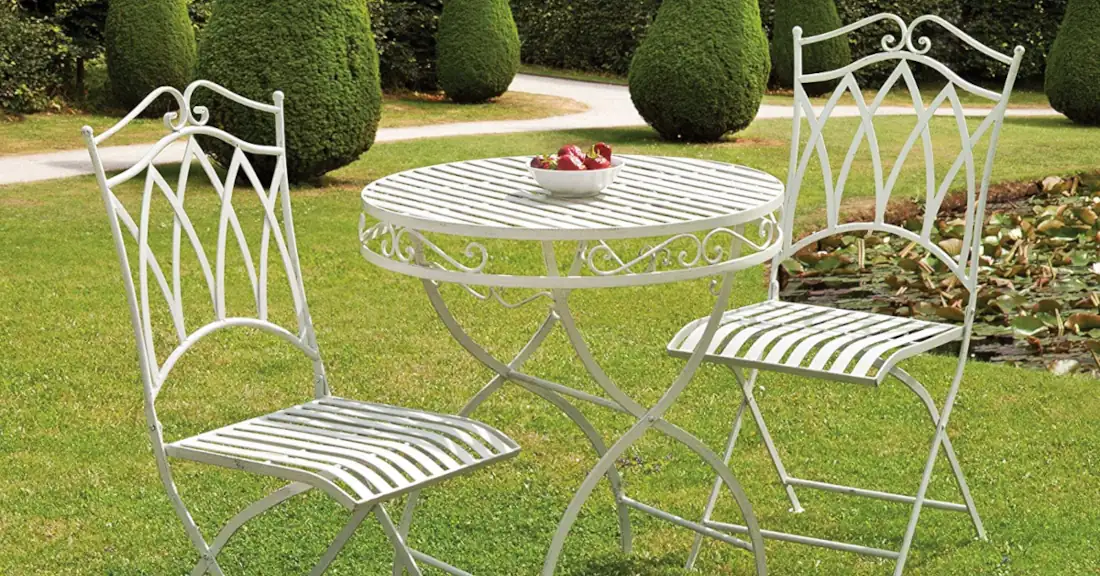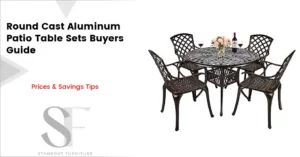When it comes to choosing patio furniture, cast iron, and cast aluminum are two popular options. Both metal materials are durable providing you with years of outdoor relaxation and entertainment. However, there are some significant differences between the two choices that you should consider before making a decision. Here, we discuss the differences between cast iron and cast aluminum, so that you can make the best decision for your outdoor furniture needs.
Pros and Cons of cast iron furniture
Cast iron is one of the oldest forms of metalworking and is known for its incredible strength and durability. It is a strong, heavy material that lasts for decades if cared for properly. The heavyweight is a benefit when it comes to windy areas since it is difficult to uproot.
One of the biggest disadvantages of cast iron is that it requires a lot of maintenance, especially when exposed to the elements. You need to constantly re-paint and protect it from rust, which can be very tedious. The heavyweight also makes it difficult to move around, meaning you won’t be able to quickly rearrange your furniture to fit different occasions or to meet changing needs like entertaining guests.

Benefits and drawbacks of cast aluminum
On the other hand, cast aluminum is a much lighter material than cast iron, but still, it is strong and durable. It is easy to clean, maintain, and move and is also resistant to corrosion and rust. This metal furniture doesn’t need to be painted or re-treated as often, making it a much more low-maintenance option than cast iron. So, if you need something with these features the best cast aluminum patio furniture is the right choice.
The main downside to cast aluminum is that it doesn’t protect against the wind as well as cast iron. This can be a problem if you live in a particularly windy area, or if you plan to put your furniture outdoors year-round.
Summary of differences between cast iron and cast aluminum
While both cast aluminum and cast iron have their advantages and disadvantages, ultimately the choice boils down to personal preferences. Here is a small summary of their main differences:
| Metal | Cast aluminum | Cast iron |
|---|---|---|
| Rust resistance | rust-resistant | can rust easier |
| Maintenance | easy to maintain | needs regular care |
| Weight | lightweight | heavy |
| Price | costs less | expensive |
| Longevity | less strong | extremely durable |
Conclusion
Overall, cast aluminum is considered one of the best materials. It is lightweight, easy to care for, and highly resistant to corrosion and rust. It is also more affordable than cast iron and easier to move around when rearranging furniture or when switching up your outdoor setup for special occasions. So, if you’re looking for low-maintenance outdoor furniture that can withstand the test of time, and look fantastic for years to come, cast aluminum is the way to go.




